erikthecelt
Old, Geezer, Unoriginal
He is on turn 1. Its a little early to pick a VC unless he is intent on culture.
Not if you a: are playing a HOF game, b: trying for a GOTM medal or award, c: trying to learn something.
He is on turn 1. Its a little early to pick a VC unless he is intent on culture.
I think the #1 one line tip from that old thread was "Play the Map" which includes VC. So if you start planning on one type of victory this early, and then discover that you chose wrong, you've wasted some of your efforts. I say explore the map first, then decide on a VC.c: trying to learn something.
Not if you a: are playing a HOF game,
b: trying for a GOTM medal or award,
c: trying to learn something.
He's not
QUOTE]
I didn't say he was, just gave 3 reasons for why someone might. Being a HOF/xOTM player, I start with a VC until proven otherwise. It usually depends on the leader and what I am trying to accomplish. Although, the victory condition is often a very relevant factor when deciding where to settle and what first tech to research.
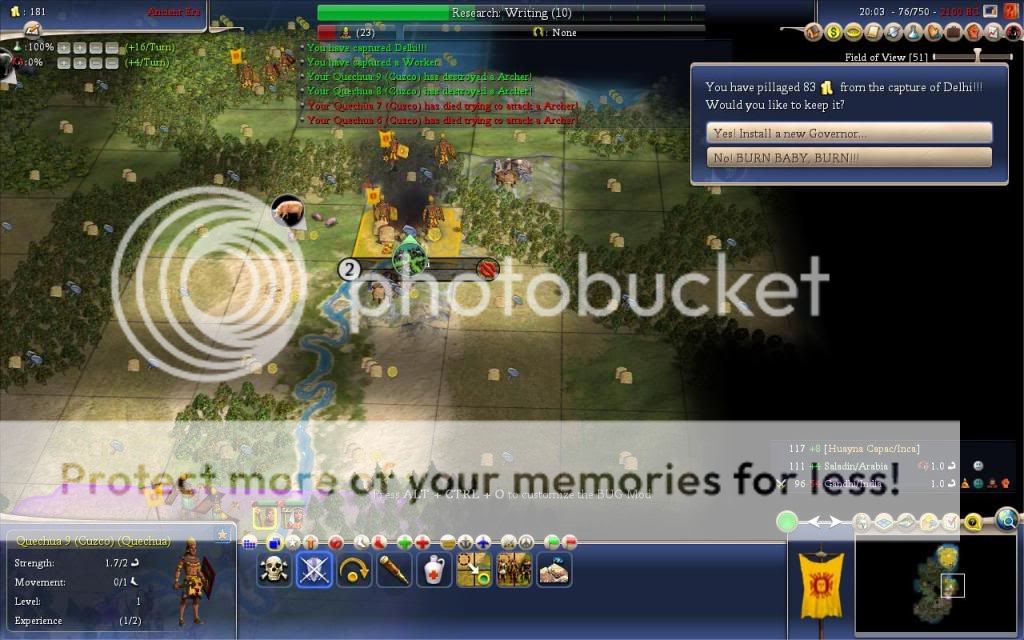

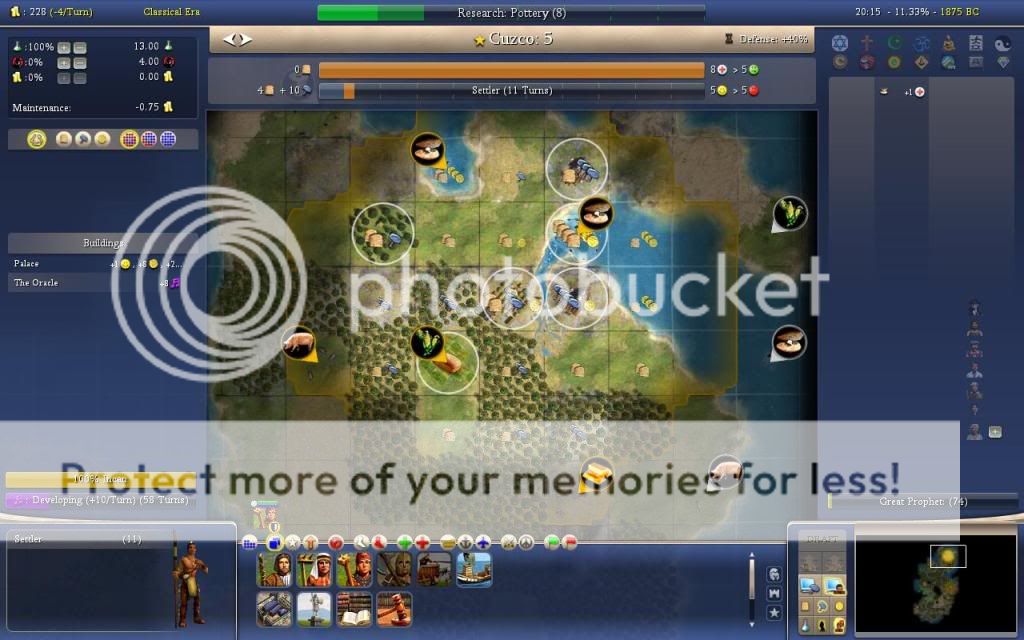

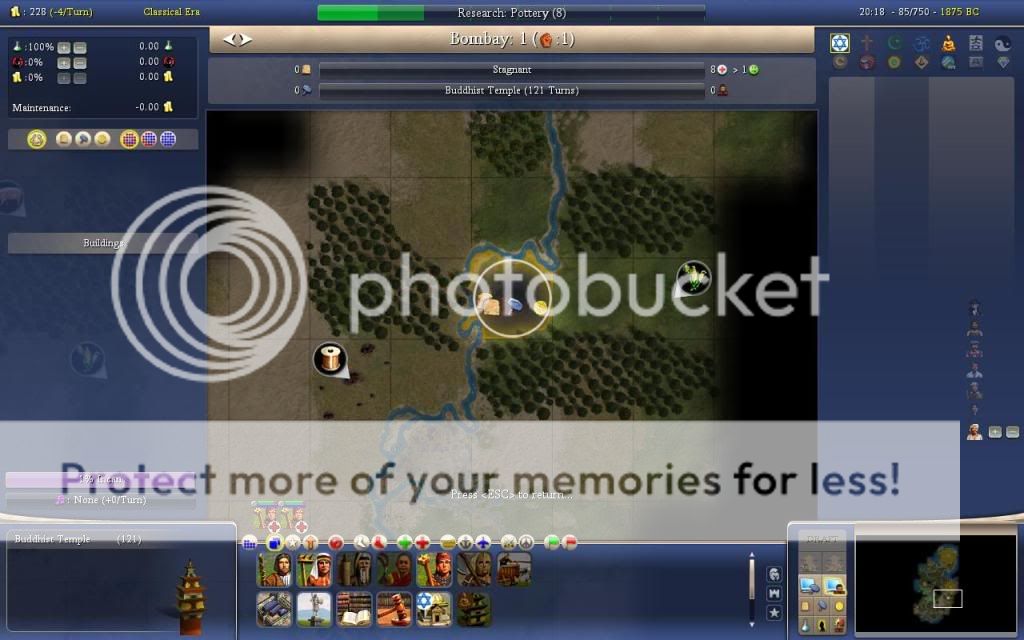


after 11 turns I have one extra Quecha and a city at population 2.
You forgot to click on the plains hill.:suicide:

Just having a second thought: is it worth it going after an enemy who is 10 tiles away?
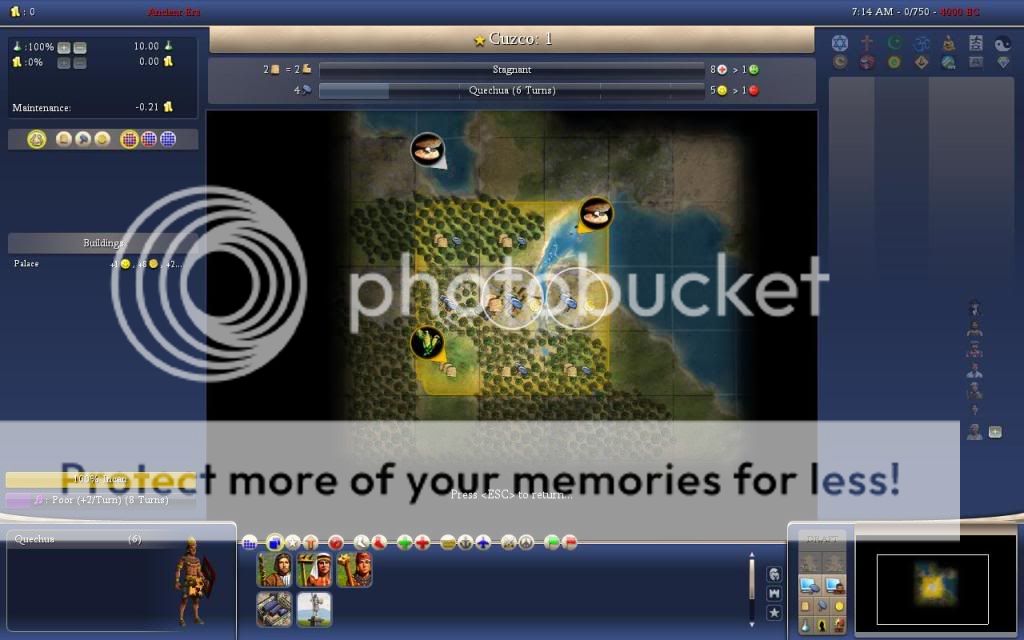
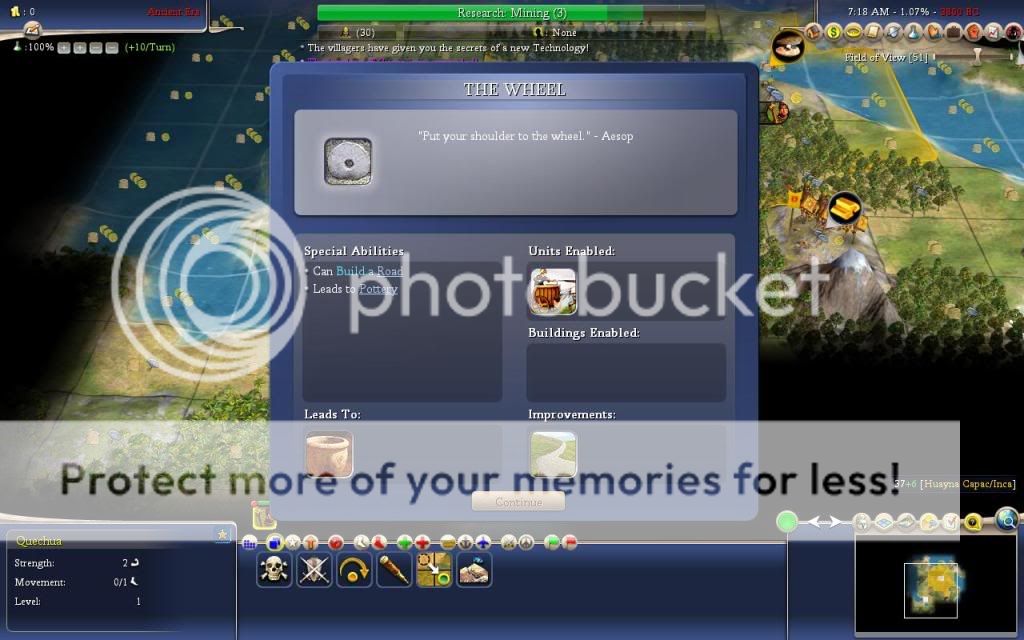



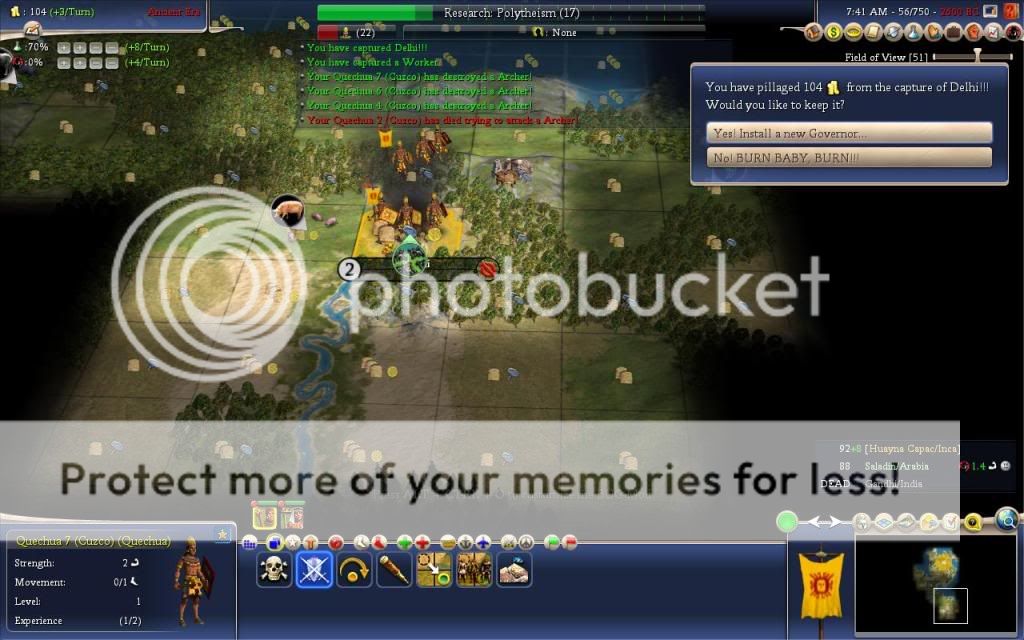
It's always easier to rush from a closer distance, but the rule of thumb for quecha's for vanilla/warlords. 2:1 for flat cities, 3:1 for hill cities 4:1 for protective, BTS has upped the anti with the AI whipping defenders, it's always nice to find an AI that hasn't teched BW yet.
Good luck with the learning exercise.
Yes, and what I learned from this is that if you attack a leader who has founded a religion, the cultural defense requires an extra couple of units.It's always easier to rush from a closer distance, but the rule of thumb for quecha's for vanilla/warlords. 2:1 for flat cities, 3:1 for hill cities 4:1 for protective, BTS has upped the anti with the AI whipping defenders, it's always nice to find an AI that hasn't teched BW yet.
Thanks, and thank you for your input.Good luck with the learning exercise.
I'm pretty sure Dave meant the forested plains hill, no?

Compared to what? The key is to recognize that you should be thinking about opportunity costs, rather than raw cost.
Some things that you might experiment with, if you don't mind replaying the start several times. What happens if you...
1) first tech Fishing, and build Quecha -> Workboat out of the box.
2) first train a worker, and tech Fishing before Bronze Working - when do you first use the fishing tech?
3) first train a worker, and tech Bronze Working before Fishing - when do you first use the bronze working tech?
There are two things I would watch for here: one is "which position feels better" - literally which one do you think is more fun. The second is which one is more effective for your Quecha rush (assuming that early rushing is part of your experiment in this game).
Being an obedient pupil I of course went for the unforested plains hill
